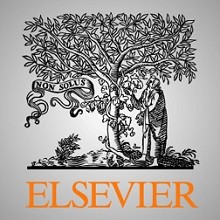
شار مورد انتظار مشاهده شده توسط STIX
Abstract
1- Introduction
2- Data and calculations
3- Results and conclusions
References
Abstract
The Spectrometer Telescope for Imaging X-rays (STIX) is one of the instruments installed onboard Solar Orbiter mission which will be launched in February 2020. After 1.5 years of cruise phase it will start to gather scientific data from the orbit with perihelion distance about 0.28 au. It means that STIX will operate also during the next solar minimum. In the paper we estimate flux measured by the instrument during periods of low solar activity. For this purpose we used solar observations which were recorded by the Solar Photometer in X-rays (SphinX) during the last minimum of solar activity. The estimation was obtained for instruments overlapping energy range from 4 to 15 keV. Presented results indicate that STIX instrument will provide efficient imaging the solar emission even during low level of solar activity (B1 GOES class).
Introduction
Solar Orbiter (Müller et al., 2013), a European Space Agency's mission, will be launched with an Atlas V rocket from the Cape Canaveral in Florida in February 2020. Following launch, Solar Orbiter will begin its 1.5 year journey to the Sun. In order to reach its near-Sun orbit, the spacecraft with use a series of gravity assists from Venus and the Earth, in essence, using them to catapult itself towards the Sun. The Spectrometer/Telescope for Imaging X-rays (STIX: (Krucker et al., 2016)) is one of the 10 instruments that are part of the scientific payload for the Solar Orbiter mission. STIX will provide imaging spectroscopy of thermal and non-thermal solar X-ray emission from 4 to 150 keV. It applies a Fourier-imaging technique using a set of tungsten grids in front of 30 pixelated CdTe detectors. Although STIX instrument is design to observe flares events, we decided to estimate flux measured by the instrument during period of low solar activity. For this purpose we used solar observations which were recorded by the Solar Photometer in X-rays (SphinX: (Sylwester et al., 2008; Gburek et al., 2013; Gryciuk et al., 2017)), instrument designed to observe soft X-ray (SXR) solar emission in the energy range between 1 keV and 15 keV with the resolution better than 0.5 keV. The SphinX operated from February until November 2009 aboard CORONAS-Photon satellite, during the phase of exceptionally low minimum of solar activity.
